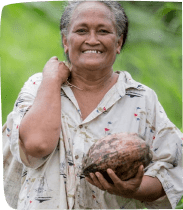In response to the latest Global Integrated Food Security Phase Classification (IPC) report published today, which warns that a high risk of famine persists across the Gaza Strip, Oxfam’s Regional Director for the Middle East, Sally Abi Khalil, said:
“The figures in this report are a shameful testament to the failure of world leaders to heed earlier warnings and hold Israel to account for its deliberate use of starvation as a weapon of war. The slight improvement of conditions in the north shows that Israel can end human suffering when it chooses – but just as quickly those gains can vanish when access is again constrained, as the report warns it is now.
“Israel’s policy of deliberate deprivation across Gaza has created this unprecedented situation where we are witnessing the world’s highest concentration of people in Al-Mawasi, a so-called humanitarian safe zone, without access to food, water or sanitation.
“Just days ago, we learned that two more babies starved to death in Beit Lahiya. The reported death toll from hunger and thirst – which is likely to be much higher – is now 31. These aren’t just numbers – they embody each grieving mother and every child lost to the most unspeakable fate.
“Not only is there a lack of food, but safe drinking water is now an increasingly rare resource, which is accelerating the spread of disease.
“Each day without a ceasefire, more lives will be lost. The clock is ticking. World leaders must increase pressure on all parties to agree to a permanent ceasefire, and on Israel to stop starving Palestinian children to death, by allowing sufficient humanitarian aid to reach them.
“Israel must ensure that movement of aid into and within Gaza, including through checkpoints, is predictable, unfettered and dramatically accelerated, with all roads operational, the entry of sufficient fuel allowed, and access safely facilitated.”
____
Note to editor:
- Global Integrated Food Security Phase Classification (IPC) Report –– Gaza Strip: Acute Food Insecurity Situation for 1 May – 15 June and Projection for 16 June – 30 September 2024





